This blog isn’t much of a diary. I’d be hard pressed to say what exactly it is, but one of its functions is to record things that might be useful or interesting later on, to ourselves or to friends or to whomever might happen along.
The still-disorganized places tab is a fragmentary record (or in some cases to-do list) of useful places— mostly to eat. We all eat about three times per day, and if you’re properly alive, you’ll agree that eating is one of life’s great sources of pleasure. Especially when traveling. And it’s not even optional! So in what follows, I’ll record some of our mostly food experiences in Corsica, Provence and Paris, where we’ve spent the last couple of weeks. Then I’ll copy and paste liberally into the places page. This seems a good way to relive these pleasures one last time on the plane before buckling down to an intensified regime chez David Barton. And if you happen to find yourself in northern Corsica, Marseille, Arles, Avignon, Les Baux, or the 6th Arrondissement of Paris anytime soon, you’ll have some recent intelligence from the field that might add a dash of joy to an evening out. Comments, suggestions and updates are very much appreciated.
Lama
In Corsica, we stayed at a rental place in the picturesque village of Lama, population 176 in 2008 according to Wikipedia. It’s an inland hamlet perched on a steep mountainside about halfway between Ile Rousse and Bastia. Lama reminded us of certain mountain villages in the relatively undeveloped west of Crete, where we (not coincidentally) spent an idyllic couple of weeks last summer.
In the main square there are some sofas under a canopy where you can have tartine in the morning, tartinated (let’s just adopt that word) with handmade fig preserves and local butter. You won’t be confused about which establishment I mean, because there’s nothing else in the main square aside from the obligatory little church. This place also had a wood-fired brick pizza oven and probably does a decent job of it; pizza was very common in Corsica, betraying its kinship with Italy, which often seems stronger than its kinship with France. (Though sadly, this doesn’t extend to the coffee. Here they must need to pay their dues to their French oppressors, if my French Coffee Theory is correct. A more benign theory is that since pizza culture is much older than espresso culture, this is an artifact of the length of the period during which Corsica has been cut off from Italian influence.*)
 When our friend Michael arrived, he brought with him, courtesy of his taxi driver, a 10cm disc of some kind of no-name Corsican sheep’s milk cheese with an ash rind, which was unbelievably good. Complex, dense, nutty and rich, slightly dry around the edges, moist but not runny in the center. Not to be refrigerated. We tried our best to spread the eating of this cheese out over several days. I’m sorry not to know more precisely what this thing was called or where it came from.
When our friend Michael arrived, he brought with him, courtesy of his taxi driver, a 10cm disc of some kind of no-name Corsican sheep’s milk cheese with an ash rind, which was unbelievably good. Complex, dense, nutty and rich, slightly dry around the edges, moist but not runny in the center. Not to be refrigerated. We tried our best to spread the eating of this cheese out over several days. I’m sorry not to know more precisely what this thing was called or where it came from.
We ate dinner twice at the town’s fancier restaurant, Campu Latinu, and were very happy with it. (We only repeated a restaurant twice on this trip.) The setting is beautiful and atmospheric, with outdoor seating on a stone terrace under fig trees and climbing vines overlooking the valley. As dusk comes in, around 9 o’clock, layers of mountainous silhouette rise softly out of the clouds on the far side in purple bands. One of the traditional dishes served by Campu Latinu, a sort of beef pot pie with juniper berries in the stew, was a standout. It was unfortunate that this was being split among three of us, each trying to balance gracious sharing against gluttony.
Meals at Campu Latinu stretched out luxuriantly into the night. Here and elsewhere in Corsica, one orders the 50cl bottles of Patrimoniu wine in order to avoid the excesses of full-sized 75cl bottles, but the intent to moderate is ruined by the inevitable second bottle. Like a lot of local wines in Europe, this stuff is roughly the price of bottled water in the grocery store, suggesting that Jesus’s parlor trick was a wash economically speaking. And it goes with the food perfectly. Such wine might or might not survive recontextualization. There are higher-end Corsican wines too, though, and we had two excellent ones later on at Emile’s in Calvi. But I’m getting ahead of myself.
We didn’t get the sense that there are a great number of classic Corsican dishes. One that came up often was cannelloni stuffed with ricotta-like brocciu cheese. We were never particularly convinced by this recipe. It’s bland, and unfortunately seems the likely model for the sort of “cheese cannelloni” made popular in the US by federally funded school lunches and microwave dinners.
Corte Corti
In Corsica, as throughout Europe, there are standardized entering and exiting signs along the roads as they wind their way through one hamlet after another. The town names are written first in French, then in Corsican, which looks pretty much like Italian with terminal o’s turned into u’s. (But of course this must never be mentioned, just like it must never be mentioned that certain of the many “official” languages of Spain look just like Spanish but with some j’s turned into x’s. Orthography straining to recapitulate ethnography, or something.) Corte is the town at the heart of Corsica’s on again, off again independence movement, and there, even more than elsewhere on the island, French spellings on the signs have been graffitied over. The university has posters on it that seem to suggest some kind of “liberation studies” curriculum.
The short walk from the town’s main square, Place Pascal Paoli, up to the castle, with its wonderful panoramic viewpoints, is recommended. At Café de la Place on this square we had a very good handmade pasta dish with sanglier, which are the wild pigs living on the island. (Roger, our apartment guy, cautioned us on the day we arrived to latch the garden gate against these marauders.) But much better overall was a meal we had on the terrace of the nearby U Paglia Orba, a place focused on high-quality regional cooking. The proprietor was kind and attentive to the kids, and the bill was very reasonable.
It was a Thursday. As night fell, some kids in the street below hooked up electric guitars and started doing covers of Rolling Stones and U2 songs, mostly getting the lyrics right. The surrounding few blocks quickly became lively with roving crowds of all ages, food stands, and musical acts, most notably a band singing traditional Corsican polyphony, which is quite beautiful in its belted-out, fullthroated open-fifths kind of way. This traditional stuff attracted a much bigger crowd than the Anglo-American cover acts, this being Corte Corti, after all.
Gorges and Falls
The Restonica Gorges, near Corte, are worth a hike. Bring your swimsuit. If one wends far enough up the twisty (and very narrow) road along the gorge and finds a place to pull the car off, one can pick a path down to the river and spend a very pleasant afternoon swimming in the rock pools and bouldering. Even better, though also more touristed, was the Cascade des Anglais in the heart of the island, a chain of waterfalls, natural slides and pools under overhanging granite ledges.
For a serious hiking holiday, the GR20 trail looks pretty great. On the way to Cascade des Anglais we stopped to walk a small section of it, down a valley and up a hill to an abandoned keep.
One can just make the keep out in Bing’s aerial imagery (shown below at three levels of detail with a pushpin at the geotag of the panorama above):
Porto, Girolata and the Scandola Reserve
On the seaside in Porto, there are lots of outfits offering boat tours and rentals to explore the coast. It would have been fun to rent a zodiac for the day, but we arrived a bit late for that. We did make it out on a snorkeling tour of the Scandola Reserve, a beautiful stretch of coastline walled in by steep granite cliffs and rock formations. The boat also stopped at Girolata, a village accessible only from the sea and perhaps by ATV. Porto and Girolata both have old stone watchtowers, part of a network of dozens circling the island built by the Genovese during their occupation, though the ruins proved hard to access.
There are several places in Girolata good for having a glass of wine or a beer before going back to the boat. In Porto, we ate at Le Robinson, which is reputed to be one of the few places where one can get real Corsican langoustes, but were mostly unimpressed. The preparation method of the langoustes involved an incongruous dark sauce, and they were overcooked.
Calvi
We were in Calvi only briefly, for a walk around the citadel and dinner. I wish we’d had more time to explore— it’s the most attractive of the Corsican seaside towns we saw on this trip, somewhat reminiscent of the Venetian harbor of Chania in northwest Crete.
Views from the citadel were magnificent, and the old town high up within the citadel had appealing-looking tea houses and shops, while the more pickpocket-friendly pedestrian alleyways below thronged with the usual merchants selling hats, ice creams, and USB sticks.
Michael’s father had booked us in to Emile’s on the waterfront, a Michelin-starred place with a second-story balcony. It was white tablecloth (what Michelin place isn’t?), but not excessively formal. The meal was very good, and the wines excellent, though Michael Sr. was to be thanked for his expert selection on this score, and I neglected to take notes. I let Anselm get away with eating all of the truffles in my amuse-bouche, which probably counts as overindulgent parenting. As we were finishing up dessert and dark settled, Bastille Day fireworks started up over the harbor. Pretty perfect.
Saint-Florent
We had a very nice upscale lunch on the water at Saint-Florent, but I’m now unable to find the name of the restaurant, which is quite frustrating. It began with an “M”, and one accessed it by walking down a somewhat hidden ramp off the main square. The langouste in lemon butter sauce here made it clear what all the fuss was about. This place also served delicious stuffed sardines, in which brocciu was deployed to better effect than in the cannelloni.
To be continued..
*OK, another smartarse is likely to point out that the modern pizza with tomato and mozzarella was only invented in 1889, around the same time as espresso (1884). (The 1880s were a fruitful decade for the Italians!) But pizza is much older than this, and the addition of slices of mozzarella on top is, while culinarily significant, conceptually trivial. Idea diffusion— nothing but a dropped comment in a bar— is sufficient to introduce the Margherita recipe to an existing pizza culture, while it’s totally inadequate for introducing espresso to a pre-espresso coffee culture.

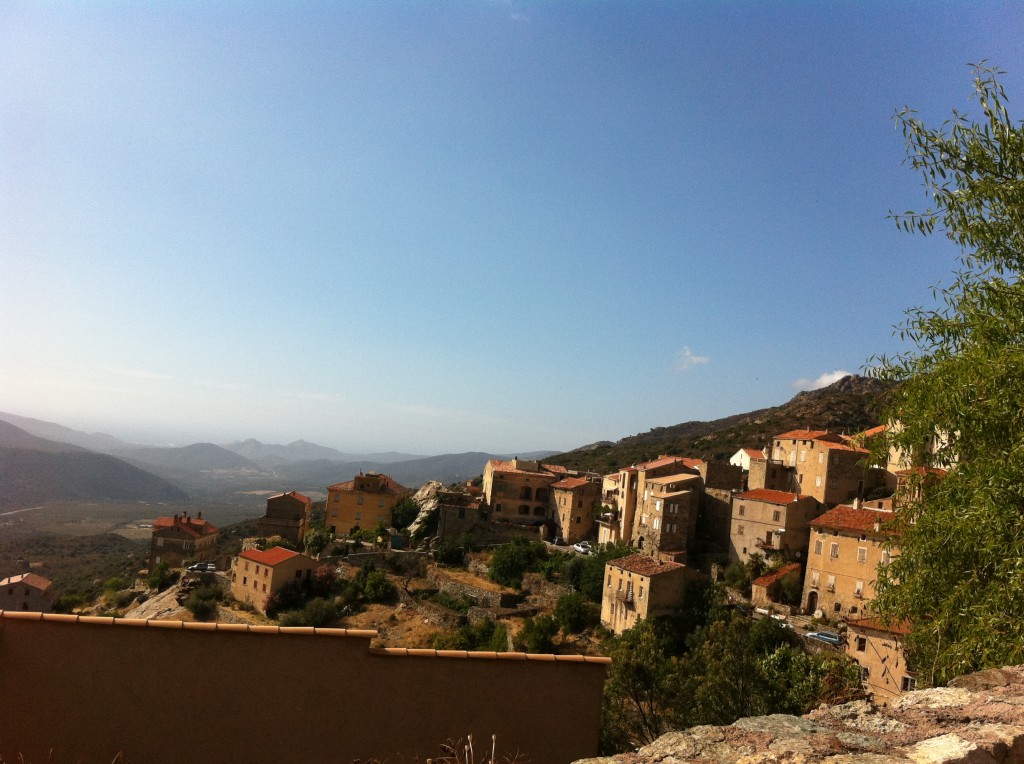
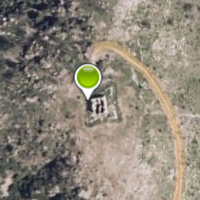

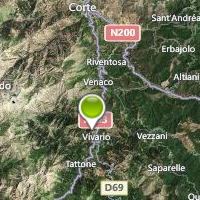
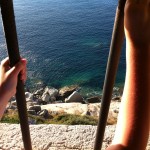
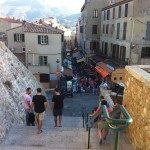
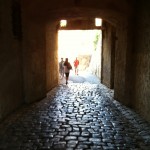
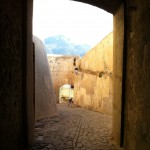
2 Responses to places in corsica